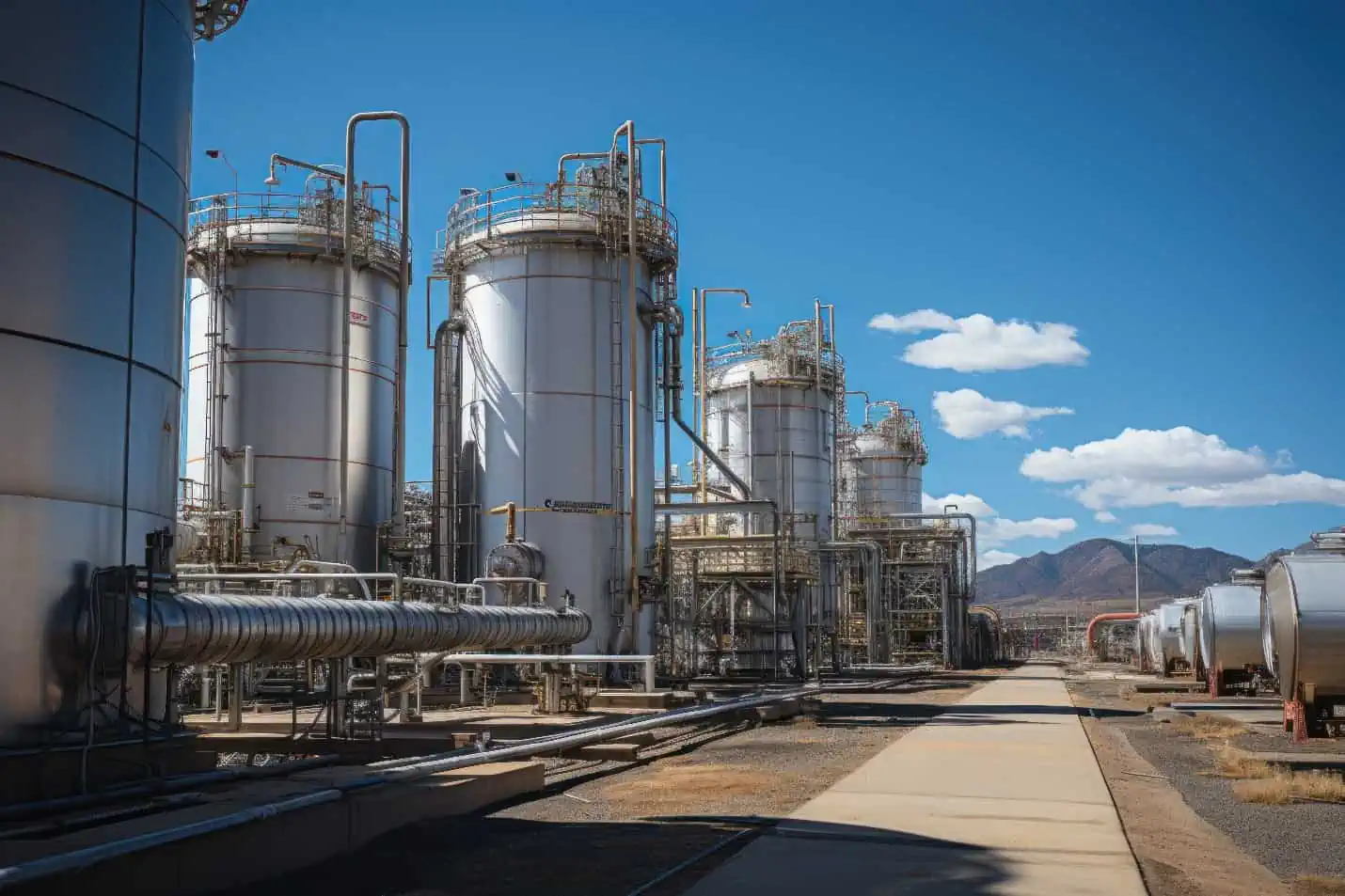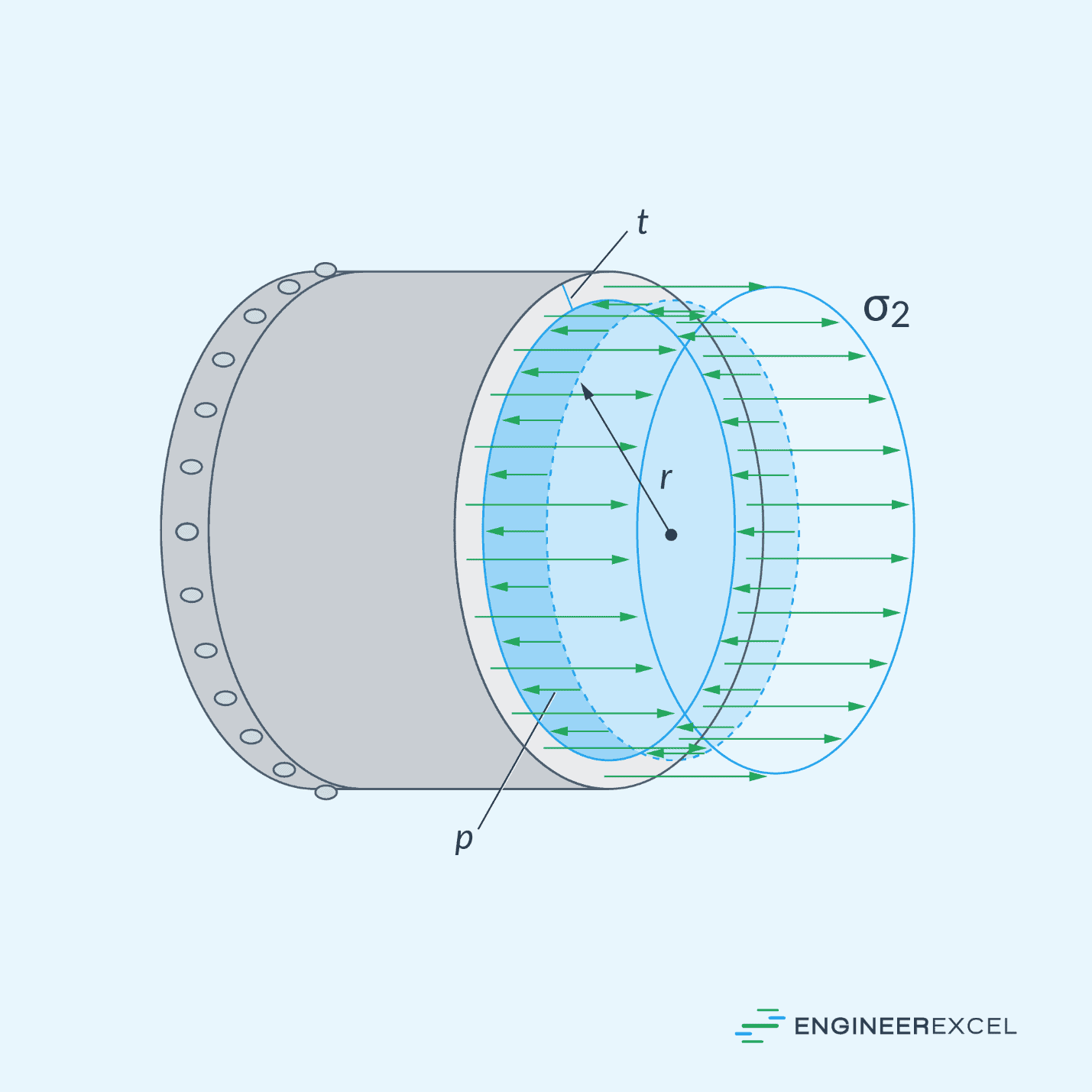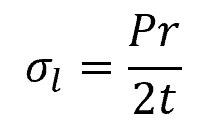Cylindrical vessels are commonly used to carry different types of fluid in various industries, such as pressure vessels and pipes. When loaded under pressure, cylindrical vessels experience longitudinal stress, which refers to the stress acting parallel to the axis of the cylinder.

In this article, we will discuss the concept of longitudinal stress and its calculation in thin-walled cylindrical vessels.
Longitudinal Stress Explained
Cylindrical vessels are typically used as boilers, tanks, or pipes in various industries. When under pressure, these structures are subjected to loading from all directions. In the context of cylindrical vessels, longitudinal stress refers to the stress that acts along the longitudinal axis of the vessel, which is parallel to the cylinder’s length, as shown in the diagram below.


Elevate Your Engineering With Excel
Advance in Excel with engineering-focused training that equips you with the skills to streamline projects and accelerate your career.
Longitudinal stress can result in both tensile and compressive forces. When internal pressure is applied, the longitudinal stress asserts a tensile force, causing the cylinder walls to expand along their lengths. Conversely, external pressure results in compressive forces on the cylinder walls.
Engineers must be mindful of the maximum allowable stress for the material used in constructing the vessel to ensure structural safety. The pressure vessels should be designed in such a way that the resulting longitudinal stress does not exceed the material’s yield strength, thus preventing any deformation or failure.
For instance, when considering the fabrication of cylindrical pressure vessels from rolled-formed plates, the longitudinal joints play a key role, as their capability to withstand stress contributes to the overall integrity of the vessel.
Longitudinal Stress Calculation in Thin-Walled Vessels
The analysis of the longitudinal stress can be simplified by assuming a thin-walled cylindrical vessel. In practice, this means that the vessel should have an inner radius-to-wall-thickness ratio of 10 or more.
In order to calculate the longitudinal stress in a thin-walled cylindrical vessel, it is important to understand the forces acting on it. In general, longitudinal stress is caused by the internal gauge pressure (P) that exerts force radially on the inner wall of the vessel. In a state of equilibrium, this internal pressure must be counteracted by a force resulting from the tension in the vessel walls, which is represented by the longitudinal stress.
The equation for longitudinal stress in a thin-walled cylindrical vessel can be defined as:

Where:
- σl = longitudinal stress [Pa]
- P = internal gauge pressure of the vessel [Pa]
- r = inner radius of the vessel [m]
- t = wall thickness of the vessel [m]
In thin-walled analysis, the resulting predictions of stress are typically within 4% of the actual maximum stress values. Furthermore, the stress distribution is assumed to be uniform throughout the thickness of the vessel wall, as shown in the diagram above.
Longitudinal Stress vs Circumferential Stress in Cylindrical Vessels
When analyzing the stress distribution in cylindrical pressure vessels, two primary stress parameters are considered: longitudinal stress and circumferential (hoop) stress. These stresses occur in the walls of the vessel as a result of the internal pressure acting against the material.
The longitudinal stress acts along the length of the cylindrical vessel. Due to internal pressure, the cylinder walls attempt to elongate, resulting in the axial stress component.
On the other hand, circumferential stress, also known as hoop stress, acts perpendicular to the cylinder’s longitudinal axis. It causes the cylinder to expand in the radial direction as the pressure inside tries to “inflate” the vessel.
In general, the circumferential stress is twice as large as the longitudinal stress. Hence, when fabricating cylindrical pressure vessels, the longitudinal joints must be designed to carry twice as much stress as the circumferential joints.
Example Problem
Problem: A cylindrical vessel with a diameter of d = 50 cm and a wall thickness of t = 10 mm is subjected to an internal pressure of P = 5 MPa. Calculate the longitudinal stress in the cylinder wall.
Solution:
First, confirm that the cylindrical vessel is thin-walled.

Since the radius-to-thickness ratio is greater than 10, it can be assumed to be a thin-walled cylindrical vessel and the following formula can be used to calculate for the longitudinal stress:

The longitudinal stress in the cylinder wall is 62.5 MPa.
